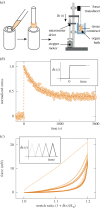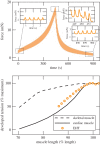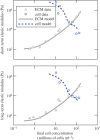Tissue constructs: platforms for basic research and drug discovery
- PMID: 26855763
- PMCID: PMC4686252
- DOI: 10.1098/rsfs.2015.0095
Tissue constructs: platforms for basic research and drug discovery
Abstract
The functions, form and mechanical properties of cells are inextricably linked to their extracellular environment. Cells from solid tissues change fundamentally when, isolated from this environment, they are cultured on rigid two-dimensional substrata. These changes limit the significance of mechanical measurements on cells in two-dimensional culture and motivate the development of constructs with cells embedded in three-dimensional matrices that mimic the natural tissue. While measurements of cell mechanics are difficult in natural tissues, they have proven effective in engineered tissue constructs, especially constructs that emphasize specific cell types and their functions, e.g. engineered heart tissues. Tissue constructs developed as models of disease also have been useful as platforms for drug discovery. Underlying the use of tissue constructs as platforms for basic research and drug discovery is integration of multiscale biomaterials measurement and computational modelling to dissect the distinguishable mechanical responses separately of cells and extracellular matrix from measurements on tissue constructs and to quantify the effects of drug treatment on these responses. These methods and their application are the main subjects of this review.
Keywords: Zahalak model; cell mechanics; drug discovery; homogenization; tissue constructs; tissue mechanics.
Figures







References
-
- Lanza R, Langer R, Vacanti J (eds). 2014. Principles of tissue engineering, 4th edn Amsterdam, the Netherlands: Elsevier.
-
- Rodriguez ML, McGarry PJ, Sniadecki NJ. 2013. Review on cell mechanics: experimental and modeling approaches. Appl. Mech. Rev. 65, 060801 (10.1115/1.4025355) - DOI
-
- Cole KS. 1932. Surface forces of the arbacia egg. J. Cell Comp. Physiol. 1, 1–9. (10.1002/jcp.1030010102) - DOI
Grants and funding
LinkOut - more resources
Full Text Sources
Other Literature Sources
